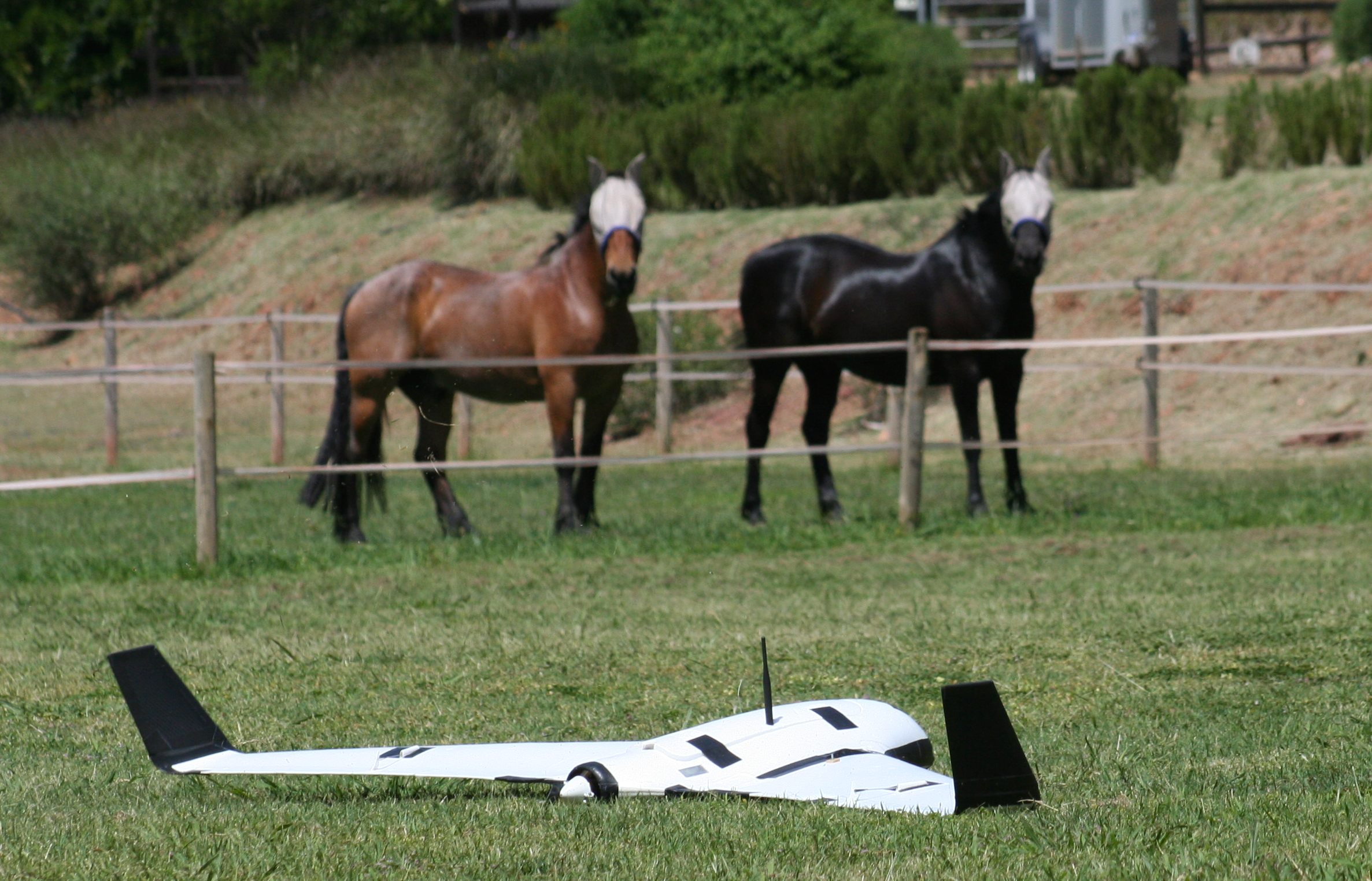More results from sea and air trials, including collaborations with farm animals
Our UAV trials are courtesy of our farm house hosts and their neighbors who have been very gracious in the use of their property. While our trials involve repeated waypoint following to understand dynamic stability issues in the various levels of controllers we use, we've had substantial interest from the local community and not all human! Tests with minor code changes (often parametric) mean we need to fly a predetermined circuit over the fields with repeated take-offs and landings. Our take-offs are down with a hand-crafted catapult (design on the net), but our landing methods beat it all, as the picture(s) here show. Overall this Wednesday, the UAV made a number of flights, but not all fully satisfactory; and some of us were getting to be a little nervous since the UAV team had yet to see the tight confines of the Diplodus and the challenges that would likely incurr.
Off shore, the AUV team on the R/V Diplodus had a good day. Not only it (re)confirmed the robustness (and simplicity) of AUV operations with the Xplorer being chucked off the aft deck of the ship. But the vehicle actually did multiple and continuous T-REX surveys, very much along the lines of what we want to be doing with the tagged Mola's next week with the start of the experiment. This time we simulated the "fish". Renato was the luck guy in a small outboard enabled boat dragging a tethered SPOT and an ARGOS tag on the surface. The Xplorer was commanded to survey around this "fish"; with multiple runs, the crew thought it was a good time to....eat food. So the chef prepared a good round of chicken and a meal was had.
Tagging operations were done for the day. However our biology colleagues were busy ensuring that we had suitable 'backup' Mola's on shore should enough not be caught in the Tuna pen. With ten Mola's in a holding tank, it was decided that these Mola looked rather tired and a decision was made to release them to the sea and restock with fresh 'backups'. This is more exhausting than can be made clear; Lara and Ana (barely) staggered in to the farm house at the end of the day after a 4am departure earlier in the morning. All the time working the held Molas.
In summary, good day for AUVs, UAV team was running behind and Molas were going back to the sea and also getting replinished. The long day ended with the regular debrief and a quick and fast order of Pizza's.




















